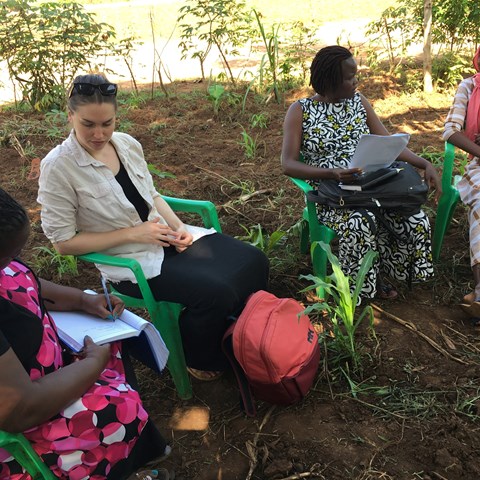Science and gender equality are both vital for the achievement of the internationally agreed development goals, including the 2030 Agenda for Sustainable Development. Over the past decades, the global community has made a lot of effort in inspiring and engaging women and girls in science. Yet women and girls continue to be excluded from participating fully in science - United Nation.
Please tell us a little about yourself.
I am a postdoctoral researcher who has recently joined the Division of Rural Development, in the Department of Urban and Rural Development. Prior to coming to SLU, I completed my PhD in Development Studies at the University of Greenwich, in the UK. I also have an MSc in International Agricultural Development from the University of California - Davis, US. My work in international development has focused on gender equality and women’s empowerment, and has led me to work in Uganda, Bangladesh, Indonesia, China, and Lesotho.
How come your research is about gender and equality?
Integrating issues of gender equality and women’s empowerment (sometimes referred to as ‘gender mainstreaming’) is a key component of all international development projects. This is because it is important to ensure that development initiatives benefit women at least as much as they benefit men, and that they do not reinforce existing inequalities or further disadvantage marginalised populations. Personally, I conduct research on these topics because I am fascinated by the ways gender dynamics underlie and influence such a wide range of industries and sectors of development. In my past research I’ve specifically focused on gendered social norms and inequalities in the contexts of agriculture, nutrition, and reproductive justice.
What do you hope to achieve with your research?
International development ultimately aims to improve the lives of the most impoverished and marginalised. My aspiration is to do so specifically for women, girls, and all who struggle under the weight of harmful gendered norms (including men, boys, and nonbinary folks).
Why, would you say, is it more difficult to succeed in science as a woman and what can we do about it?
That’s a big question! Answering it fully could be a whole book. But in brief, I would say that the gender inequalities present in science stem from deeper social norms and biases. Therefore, truly leveling the playing field for women and other marginalised genders will require continued questioning of how gender constructs shape our social values, and how those values seep into work environments and even scientific practice. This itself is an entire field of science, known as feminist science & technology studies (STS). Understanding the root of these issues can then inform our choices about how to, for example, change work cultures and public policies to be more inclusive of women’s specific needs and experiences. It is also important to remember that such experiences cannot be divorced from other types of inequalities (e.g., race, disability, class). Ultimately, making science more inclusive will not only benefit these specific populations, but will also lead to more rigorous, objective science that benefits all of society.
Thank you Gwen!
